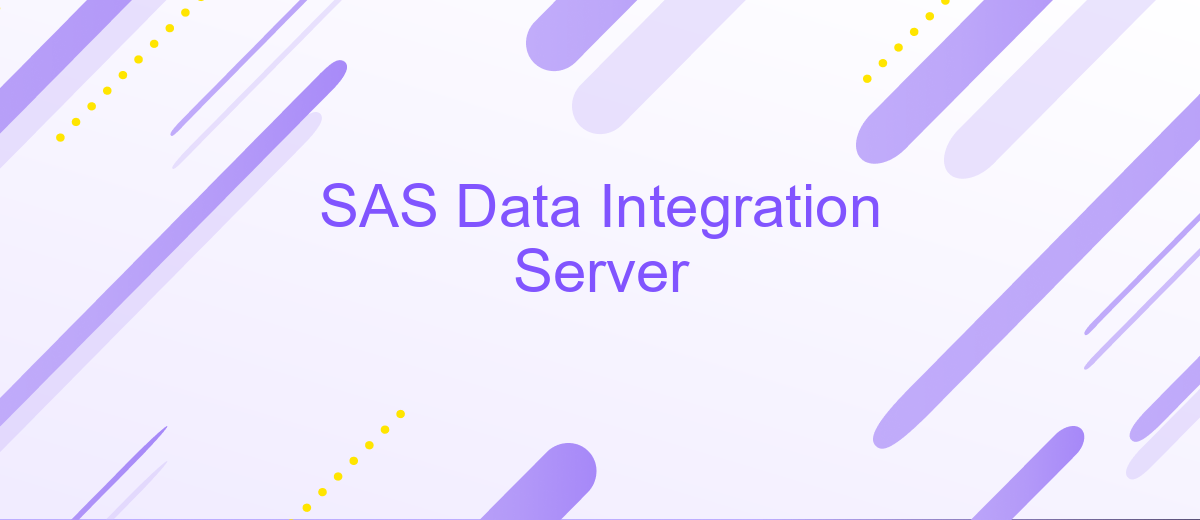SAS Data Integration Server
The SAS Data Integration Server is a powerful tool designed to streamline and enhance the data integration process. It provides comprehensive capabilities for data transformation, cleansing, and loading, ensuring that businesses can efficiently manage and utilize their data. By integrating data from various sources, the server supports informed decision-making and drives operational efficiency.
Introduction
SAS Data Integration Server is a powerful tool designed to streamline and enhance data integration processes within organizations. It provides a robust environment for data extraction, transformation, and loading (ETL), enabling businesses to efficiently manage and optimize their data workflows.
- Automates ETL processes to save time and reduce errors
- Supports a wide range of data sources and formats
- Ensures data quality and consistency through advanced validation techniques
- Facilitates seamless data integration with other systems and applications
- Provides comprehensive monitoring and reporting capabilities
By leveraging tools like SAS Data Integration Server, organizations can achieve greater data accuracy and reliability. For instance, integrating with services such as ApiX-Drive can further simplify the process by automating data transfers between various applications, ensuring that data is always up-to-date and readily available for analysis. This integration capability is essential for businesses aiming to maintain a competitive edge in today's data-driven landscape.
Key Features and Benefits

SAS Data Integration Server provides a robust platform for managing and transforming data from various sources. One of its key features is the ability to automate data integration processes, ensuring data consistency and accuracy across the organization. With its advanced ETL capabilities, users can easily extract, transform, and load data, streamlining the data preparation process. Additionally, the server supports a wide range of data sources, making it highly versatile and adaptable to different business needs.
The benefits of using SAS Data Integration Server extend beyond just data management. It enhances decision-making by providing high-quality, reliable data that can be used for analytics and reporting. Furthermore, its integration with services like ApiX-Drive allows for seamless connectivity between various applications, simplifying the integration process and reducing the time required to set up data workflows. This not only boosts productivity but also ensures that data is always up-to-date and readily available for analysis, driving better business outcomes.
Architecture and Components

SAS Data Integration Server is designed to streamline data integration processes and ensure data quality across the enterprise. Its architecture is built to support efficient data management and integration through various components that work seamlessly together.
- Data Integration Studio: A graphical user interface that allows users to design, implement, and manage data integration processes.
- Metadata Server: Central repository for storing metadata, ensuring consistency and reusability of data integration processes.
- Job Scheduler: Automates the execution of data integration tasks, improving efficiency and reliability.
- Data Quality Server: Ensures data accuracy and consistency through data cleansing and validation processes.
- ApiX-Drive Integration: Facilitates seamless integration with external APIs, enhancing the flexibility and scalability of data integration workflows.
These components collectively provide a robust framework for managing data integration tasks, ensuring data quality, and automating processes. The inclusion of ApiX-Drive allows for easy integration with various third-party applications, making the SAS Data Integration Server a versatile solution for modern data management needs.
Use Cases and Applications

SAS Data Integration Server is a powerful tool designed to streamline data management processes. It is widely used in various industries for its ability to efficiently handle large volumes of data and support complex data integration tasks. This server ensures that data is easily accessible, reliable, and ready for analysis.
One of the primary applications of SAS Data Integration Server is in data warehousing, where it helps organizations consolidate data from multiple sources into a single, coherent data store. Additionally, it plays a crucial role in data migration projects, ensuring smooth transitions from legacy systems to modern platforms.
- Data warehousing and consolidation
- Data migration and transformation
- Business intelligence and analytics
- Regulatory compliance and reporting
Moreover, SAS Data Integration Server can be enhanced with integration services like ApiX-Drive, which automates the process of connecting various data sources and applications. This synergy allows organizations to focus on deriving insights from their data rather than getting bogged down by integration challenges. ApiX-Drive's user-friendly interface and robust capabilities make it an excellent complement to SAS Data Integration Server.


Conclusion
SAS Data Integration Server stands as a robust solution for managing and streamlining data processes within organizations. Its capabilities in data transformation, data cleansing, and data loading ensure that businesses can maintain high-quality, consistent, and reliable data. This, in turn, enhances decision-making processes and operational efficiency. By leveraging SAS Data Integration Server, companies can integrate data from multiple sources, thereby creating a unified data environment that supports advanced analytics and reporting.
For organizations looking to further simplify their data integration processes, services like ApiX-Drive offer valuable support. ApiX-Drive provides seamless integration capabilities, enabling businesses to connect various applications and automate workflows without extensive coding knowledge. Combining the power of SAS Data Integration Server with ApiX-Drive's user-friendly integration services can significantly reduce the complexity and time required for data management tasks. Ultimately, these tools together empower businesses to focus more on strategic initiatives and less on the technical intricacies of data integration.
FAQ
What is SAS Data Integration Server?
How does SAS Data Integration Server ensure data quality?
Can SAS Data Integration Server handle real-time data integration?
What are the key benefits of using SAS Data Integration Server?
How can I automate SAS Data Integration Server processes?
Routine tasks take a lot of time from employees? Do they burn out, do not have enough working day for the main duties and important things? Do you understand that the only way out of this situation in modern realities is automation? Try Apix-Drive for free and make sure that the online connector in 5 minutes of setting up integration will remove a significant part of the routine from your life and free up time for you and your employees.

